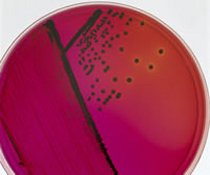Salmonella Serotypes and Properties
More than 2,400 Salmonella serotypes have been described and reported. All Salmonella serotypes are considered potentially pathogenic. Some serotypes are host specific, but the majority can affect different hosts.
Classification of Serotypes
Naming of strains is now as follows:
For example, the serotype previously referred to as Salmonella typhimurium has become Salmonella enterica subspecies enterica serotype Typhimurium. For brevity, it is usually shortened to Salmonella Typhimurium.
Salmonella bacteria are classified into groups according to the Kauffman-White classification scheme. The identification of serotypes is based on:
- “O” (somatic/cell wall) antigens
The O antigens consist of the lipopolysaccharide-protein chains exposed on the cell surface. - “H” (flagellar) antigens.
The different antigens are numbered and each serotype is given an antigenic formula and classified into a group. Some examples are given in Table 1 below:

It follows that there could be cross-immunity induced against serotypes within the same group.
All Salmonella serotypes are considered potentially pathogenic. Some serotypes are host specific, but the majority can affect different hosts.
Properties of Salmonella serotypes
- Gram-negative non-sporing rods (2-4X0.5µm), do not have capsules.
- Usually motile with long flagella.
- Non-motile variants may occur e.g S. Pullorum, S. Gallinarum.
- Optimal growth between 35-37°C and pH 7-7.5.
- Can survive several months away from the host.
- Can survive refrigeration, freezing (much reduced growth at temperatures (15°C and above 6°C) and dry conditions.
- Sensitive to most disinfectants.
- Killed at high temperatures. In general 60°C for 2-6 minutes or 70°C for 1 minute will kill the bacteria.

Salmonella and poultry
Control of Salmonella
